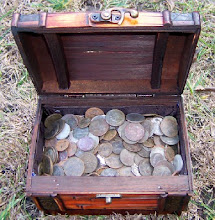During the era of sailing ships, ship builders thought the finest mast timber was found in the forests of Vermont. The mast, or spar, rose vertically from the deck of a ship and supported the yards, booms, and rigging. The mast needed to be straight and strong, and some ships required several of them.
When David Jarvis realized the growing demand for quality masts during the shipbuilding boom of the early 1700's, he decided to go into business providing the tall, strong slender, straight pine that grew in central Vermont. Jarvis hired a team of loggers and led them to a site near the upper reaches of the Winnoski River, not far from the present-day town of Middlesex. While the loggers cut and trimmed the poles, Jarvis marketed the Vermont masts to shipbuilders along the Atlantic Coast and in Canada. As many as three cut masts were loaded onto large sleds that were pulled by oxen to New Hampshire's Merrimack River. Then, they were lashed together and rafted to the port of Salisbury, Boston, and other important shipbuilding centers. Occasionally, logs were hauled west to Lake Champlain and then northward to the St. Lawrence River.
Before long, Jarvis's fine masts were the talk of the shipbuilding industry. For the builders, as well as for the captains of the vessels, no other mast would do, and the entrepreneur soon had orders for as many poles as he could deliver.
Jarvis required only one thing from those who purchased his masts they had to pay in gold. During the nearly twenty years that Jarvis operated his mast-cutting business, it is estimated that he accumulated thousands of dollars worth of gold coins. A frugal man, Jarvis lived in a primitive cabin that he constructed from rocks and the limbs trimmed from cut masts on his property.
Once, when Jarvis returned to the Vermont logging camp from a successful sales trip, he carried a pouch heavy with gold coins. From the contents of the pouch, he paid his workers. One of Jarvis's employees, a loyal worker named Hampton, commented that it was dangerous to carry around such a large amount of gold and that someone might kill him for it. Hampton suggested to his boss that he place the money in a bank.
At this Jarvis laughed and said he did not trust banks. Taking Hampton into his confidence, Jarvis explained that he buried his gold in a secret location just a few steps from his cabin.
As time passed and the mast-cutting business continued to flourish, Jarvis grew quite wealthy by New England standards. In spite of his fortune, however, he preferred to live in his crude cabin, and when he traveled to the coast to conduct business, he slept on the docks and ate the food he carried in a pouch. Jarvis was never known to drink, stay in hotels, or otherwise spend money.
On numerous occasions, Jarvis was followed by rovers on his return trips to Vermont, but he always managed to elude his trackers. During the summer 1748, Hampton told Jarvis that two of the loggers had often wondered aloud where their employer hid his gold. The next few weeks, Jarvis often spotted those two men watching him closely when they weren't working in the woods. At those times, Jarvis was careful not to approach his secret hiding place.
Several weeks following Hampton's warning, David Jarvis was killed. While overseeing the cutting of masts in a certain section of the forest, a falling tree struck the businessman, and he died instantly when his skull was crushed. According to observers, there was no warning, and the men cutting the tree were never identified. It was believed , but never proven, that Jarvis was murdered by the two men who had expressed interest in his gold.
Hampton tried vainly to continue supplying masts to the shipbuilders, but being unskilled at business, he soon abandoned his attempts. For several weeks, Hampton searched the area around Jarvis's cabin for the cache of buried coin, but was never able to find it. It has been recorded that others, most likely men who cut masts for Jarvis, dug dozens of holes in the ground near the old cabin, but they, too, came away empty-handed.
During the first decade of the 1900's, a Middlesex resident reported finding several gold coins near an old abandoned logging camp not far from the Winooski River. The coins had 1740's mint dates.
It is likely that the individual accidentally stumbled onto a portion of Jarvis's cache, a fortune that could possibly be worth a million dollars today.
If you want to try your own luck at finding some old items along this historic river take a couple of tools with you. A good time to search the area is when the water levels are lowest. This usually occurs during the hot summer and fall months when the climate is driest.
I know of several individuals who have had good success snorkeling rivers and finding lost items in them. After much research, reading multiple reviews, and using several different pair. I have determined that the best snorkeling gear is the Cressi Big Eyes Mask & Snorkel
This snorkel has worked very well for me and I have found a lot of good items while using it. Make sure to also get a good Mask Defogger
I also use an underwater flashlight called the Nova 700







2 comments:
I SURE WISH IT WAS CLOSER,, ID GO TAKE A LOOK AROUND. KEV
I really love reading these kinds of blogs. Keep updating and write something on Logging Company Vermont and other things also. I also write something amazing on auto detailing by copying your style.
Post a Comment